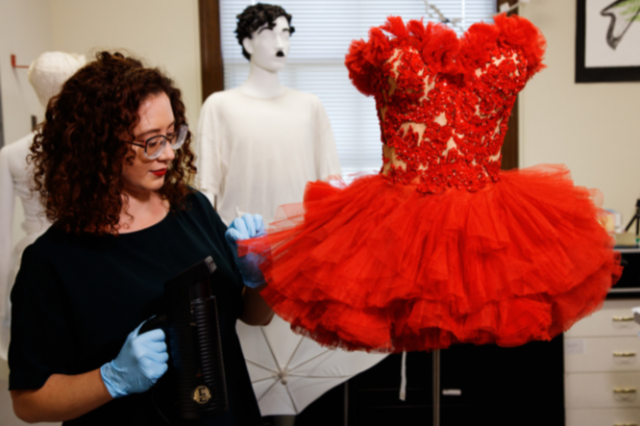Sewing for the Gold
Conservators really like weird, unique problems. We’re not happy that something deteriorates, but we’re really fascinated to find out how that's happening.

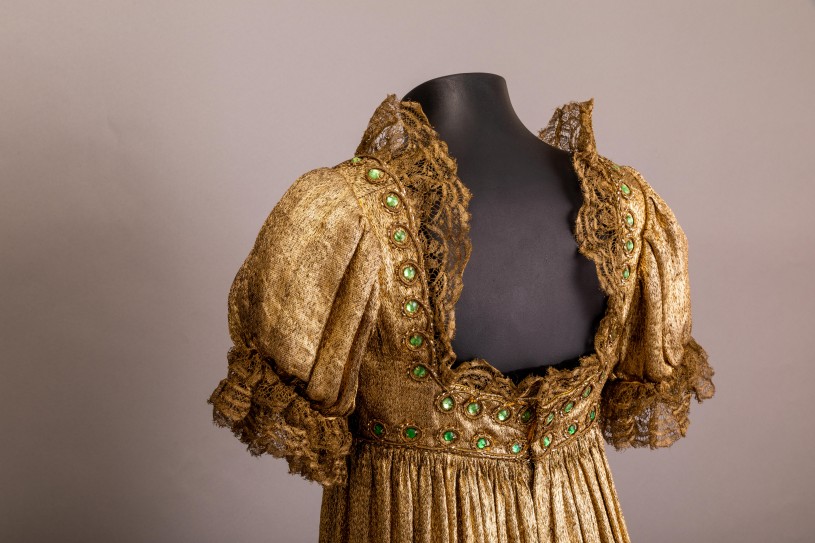
When NHM's Assistant Conservator Marina Gibbons noticed some dark spots on Mary Pickford’s elegantly stunning gold dress from the film, Rosita, her first thought was sweat.
"Sometimes when a person sweats on a piece of clothing and then it doesn’t get cleaned, the acidity of the sweat can rust holes in the textiles, but the location of these spots was not where you would expect for sweat,” Gibbons says. The spots were mostly along the train of the dress and at the tops of the shoulders, and given that the dress used metal-wrapped fibers, she thought they might be due to corrosion. Two more questions came into focus: what kind of base metal and what process was used to create the gold thread? For answers, Gibbons turned to science.
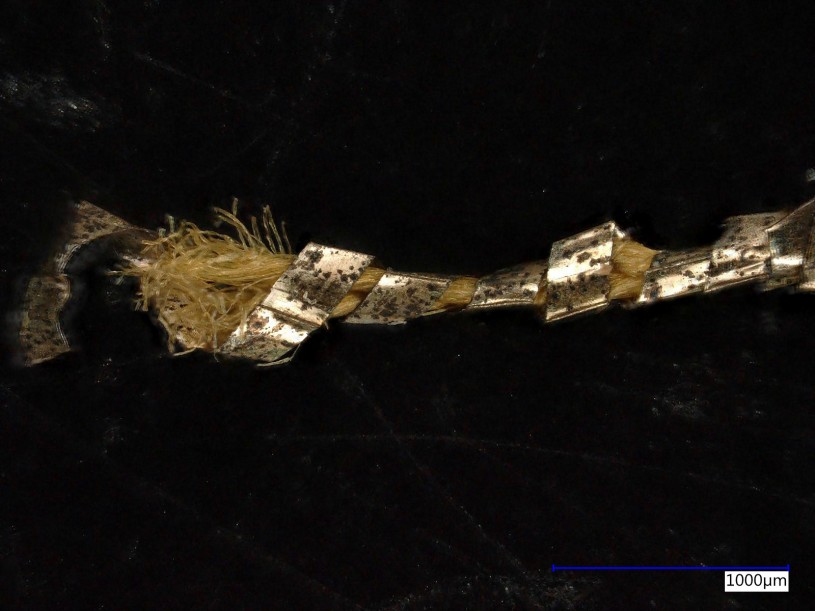
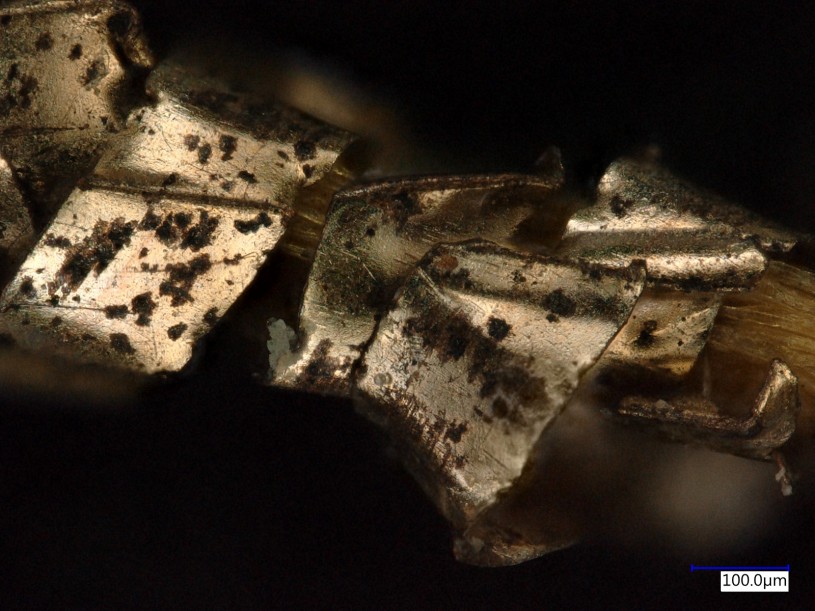
Taking some of the metallic strands for investigation, she first made use of the Entomology Department’s high-resolution digital Keyence microscope, then the Museum’s scanning electron microscope, and finally, the Mineral Sciences Department's XRF (x-ray fluorescence) analyzer.
"You just bounce a small amount of energy off your sample, and the way that it fluoresces tells you what element it is," Gibbons says of the XRF analysis. Her investigations revealed a base layer of copper, as she’d suspected, from the brown coloration of the stains, and less than a micron of gold, hinting at how the thread was made: electroplating, or passing a current through a solution to fuse gold to the base metal. "We believe it’s electroplated because of the vanishing thinness of the gold layer, and because there are no other visible tool marks that would have come from rolling [the other method for creating gold thread]," Gibbons explains.
She’d uncovered the corrosion and the likely method of construction, but the dress had one more secret to reveal. While investigating what she suspected to be a bloodstain using ultraviolet light, Gibbons was surprised by the jeweled trim fluorescing.
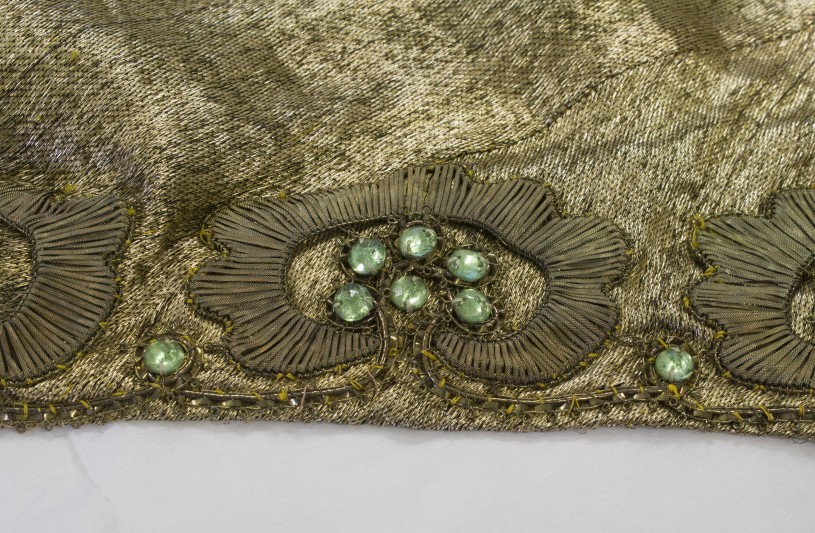
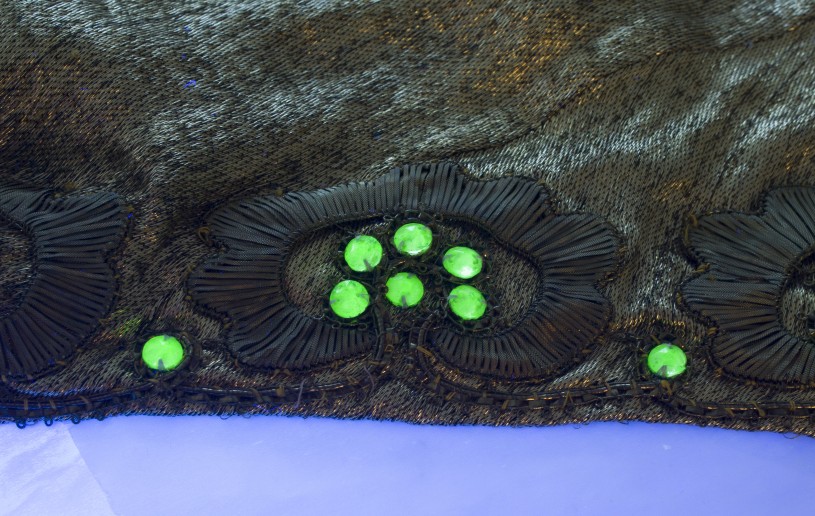
“I just started laughing hysterically," Gibbons remembers. The beads are made from uranium glass, a relatively common material for decoration in the 1920s, which glows an eerie and beautiful green under UV light.
